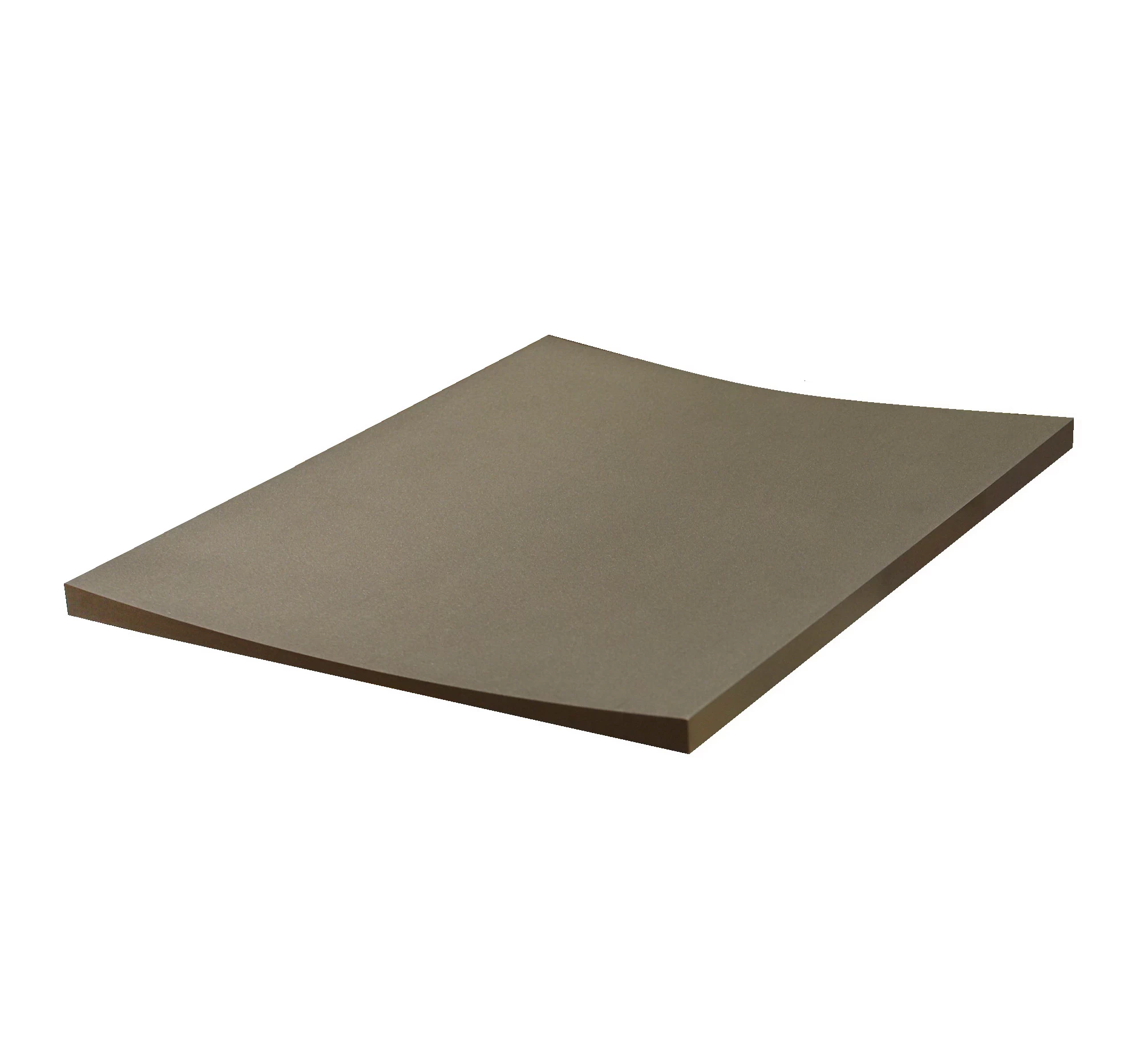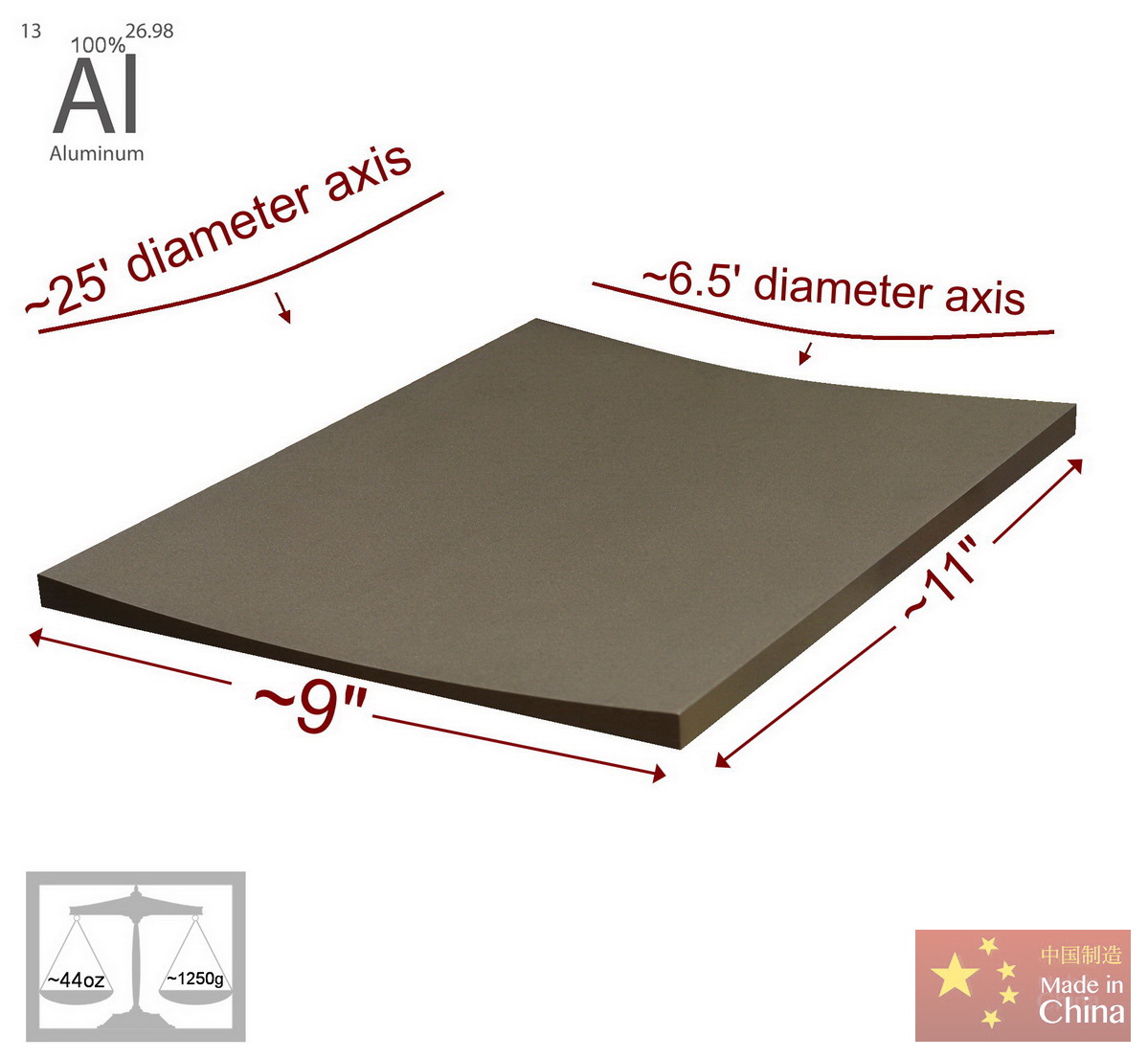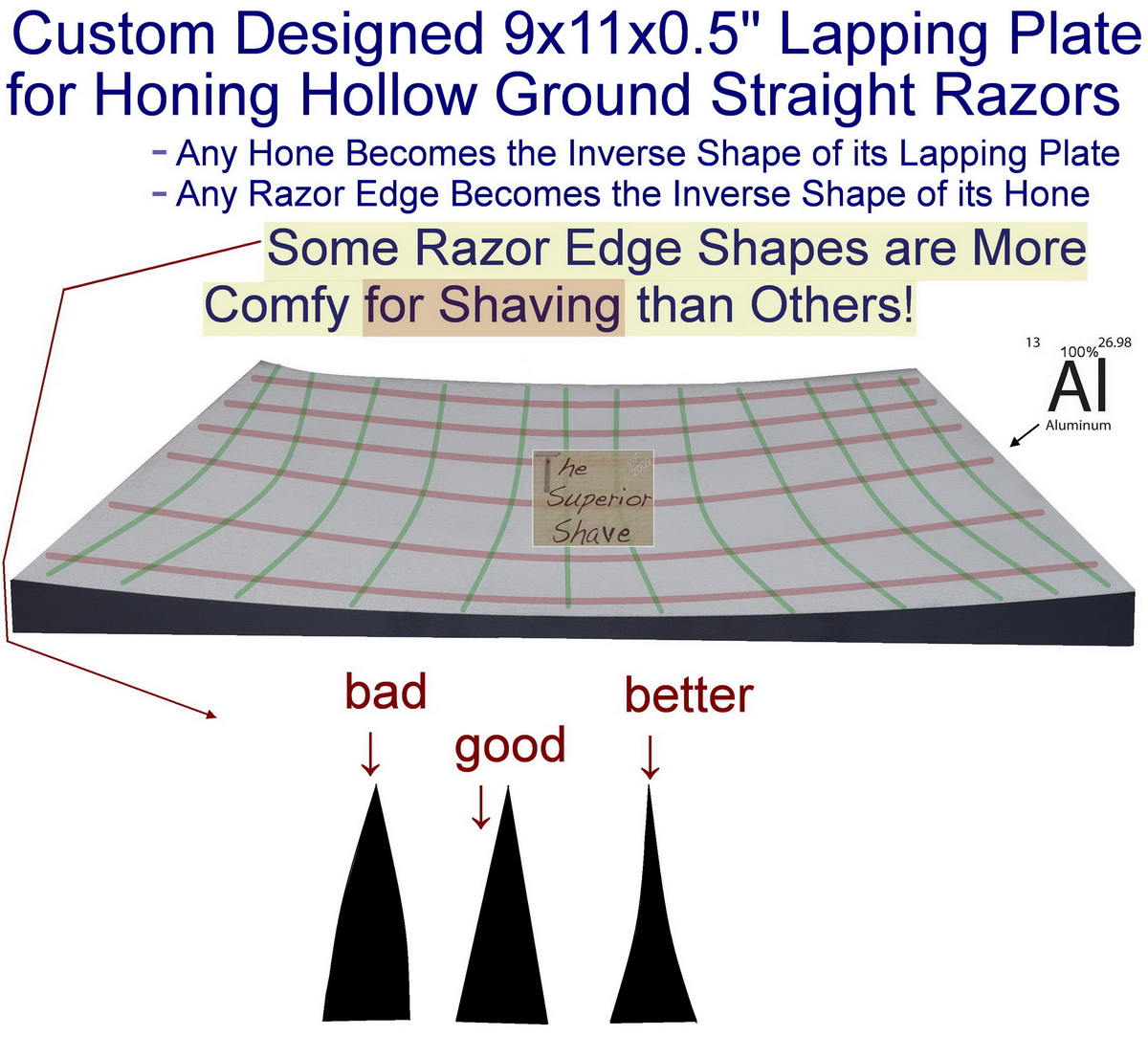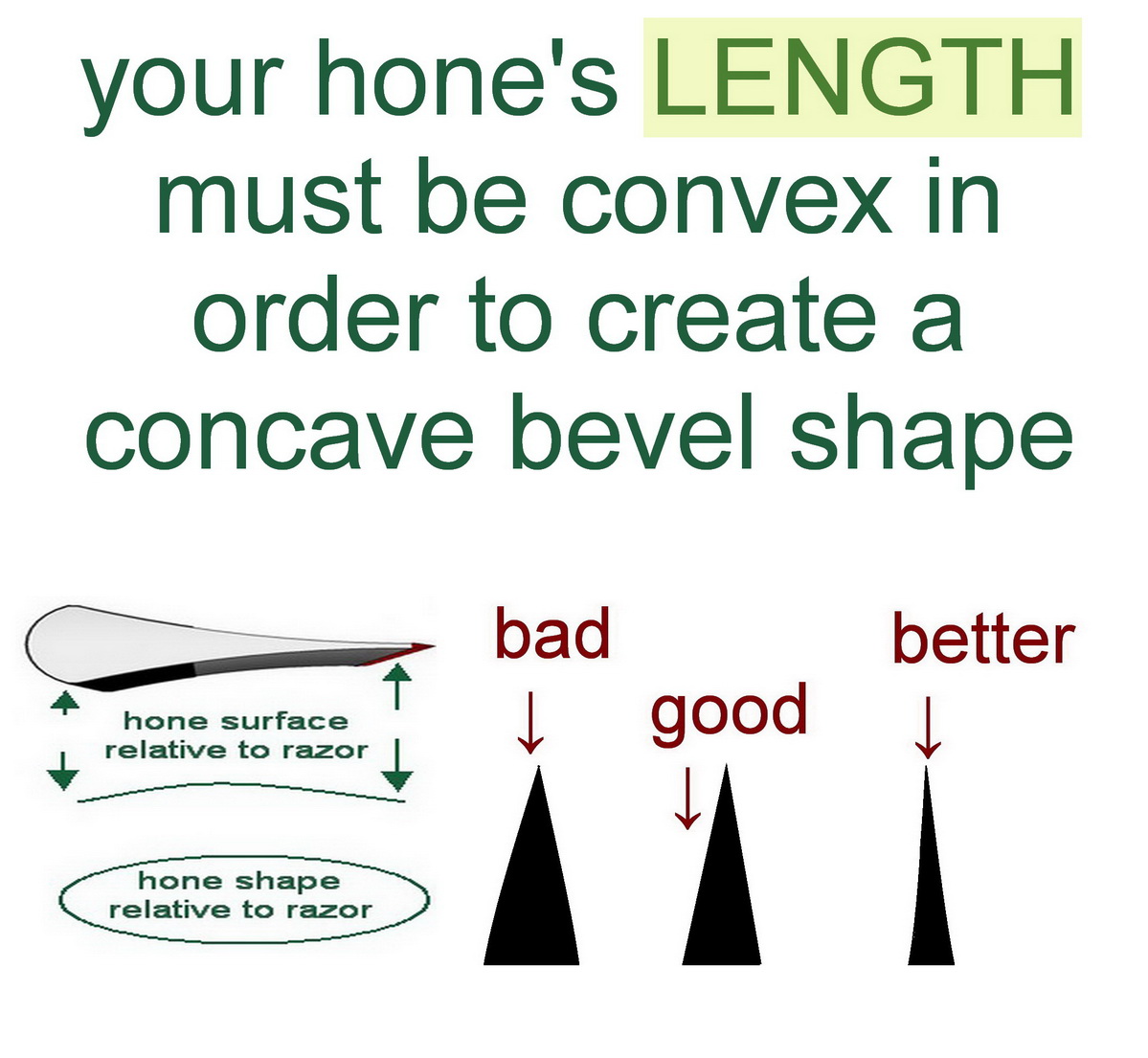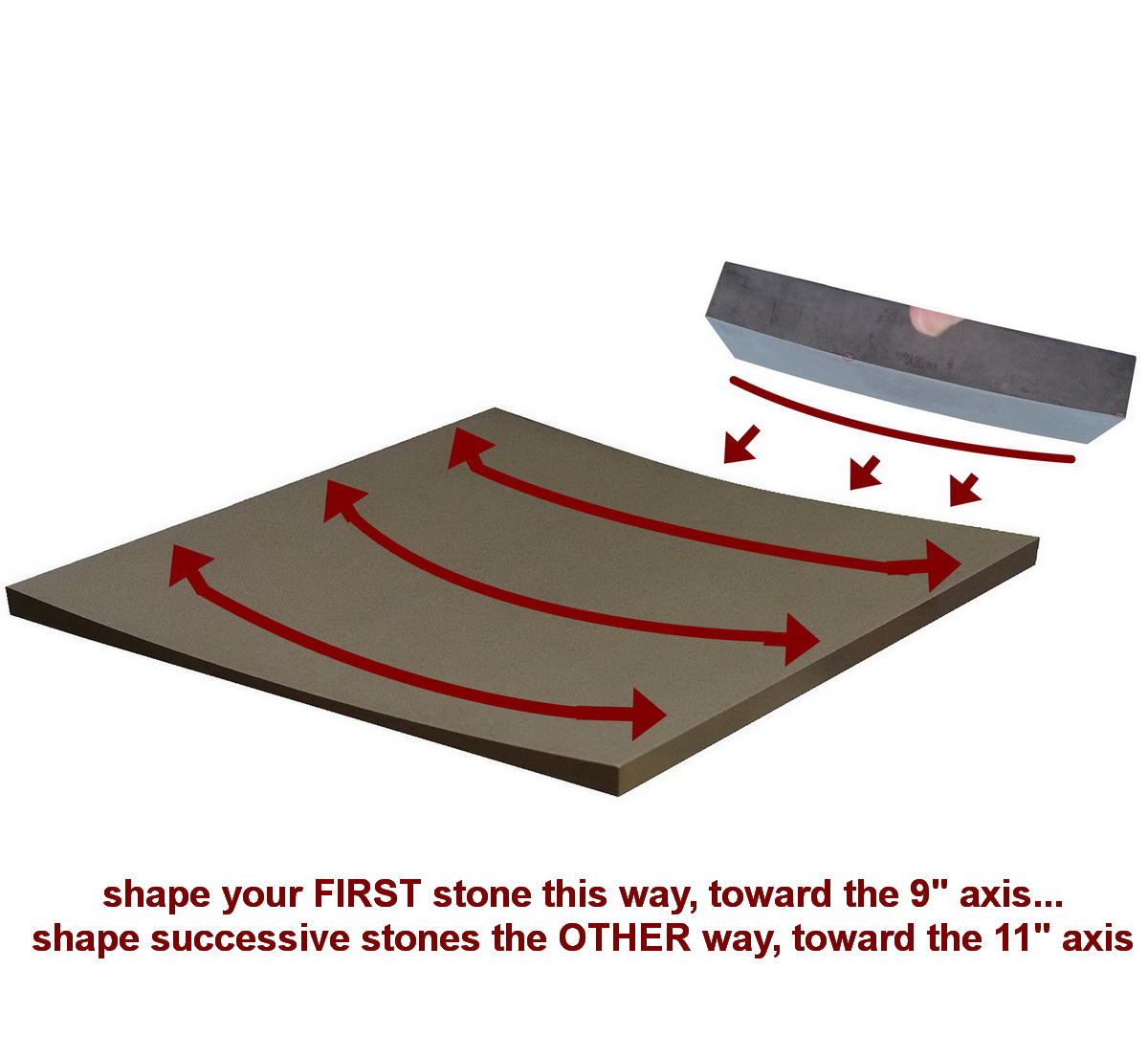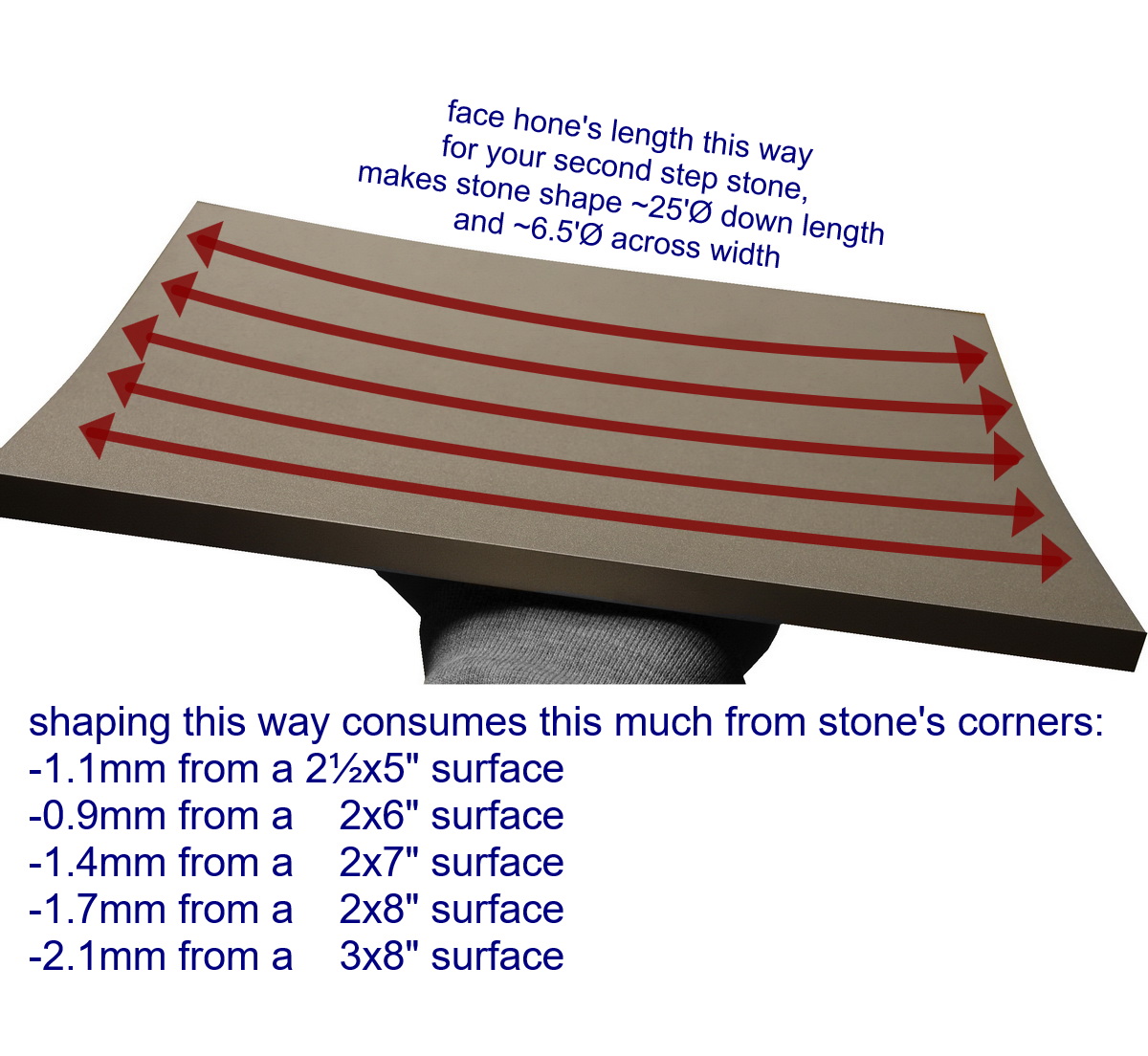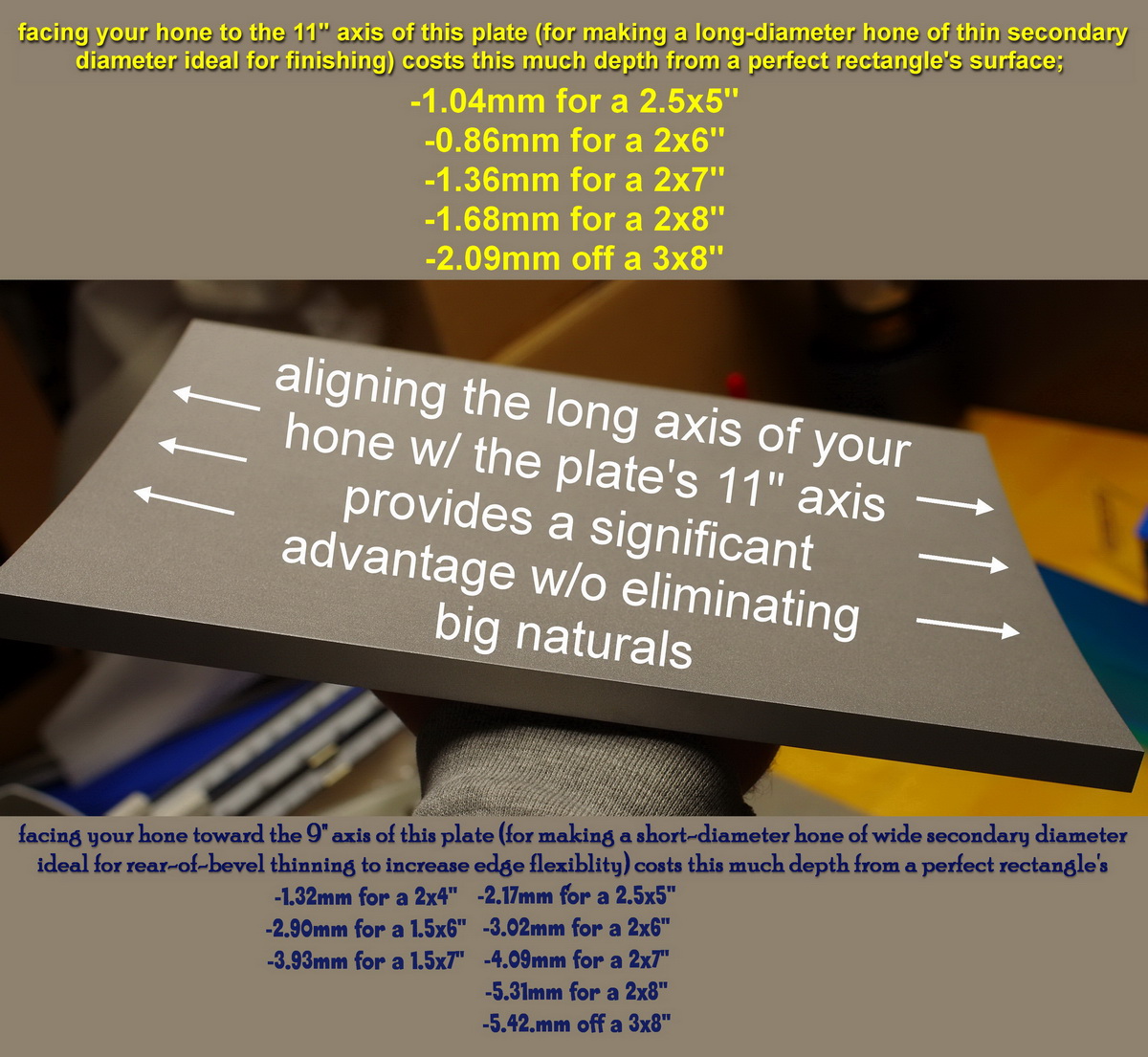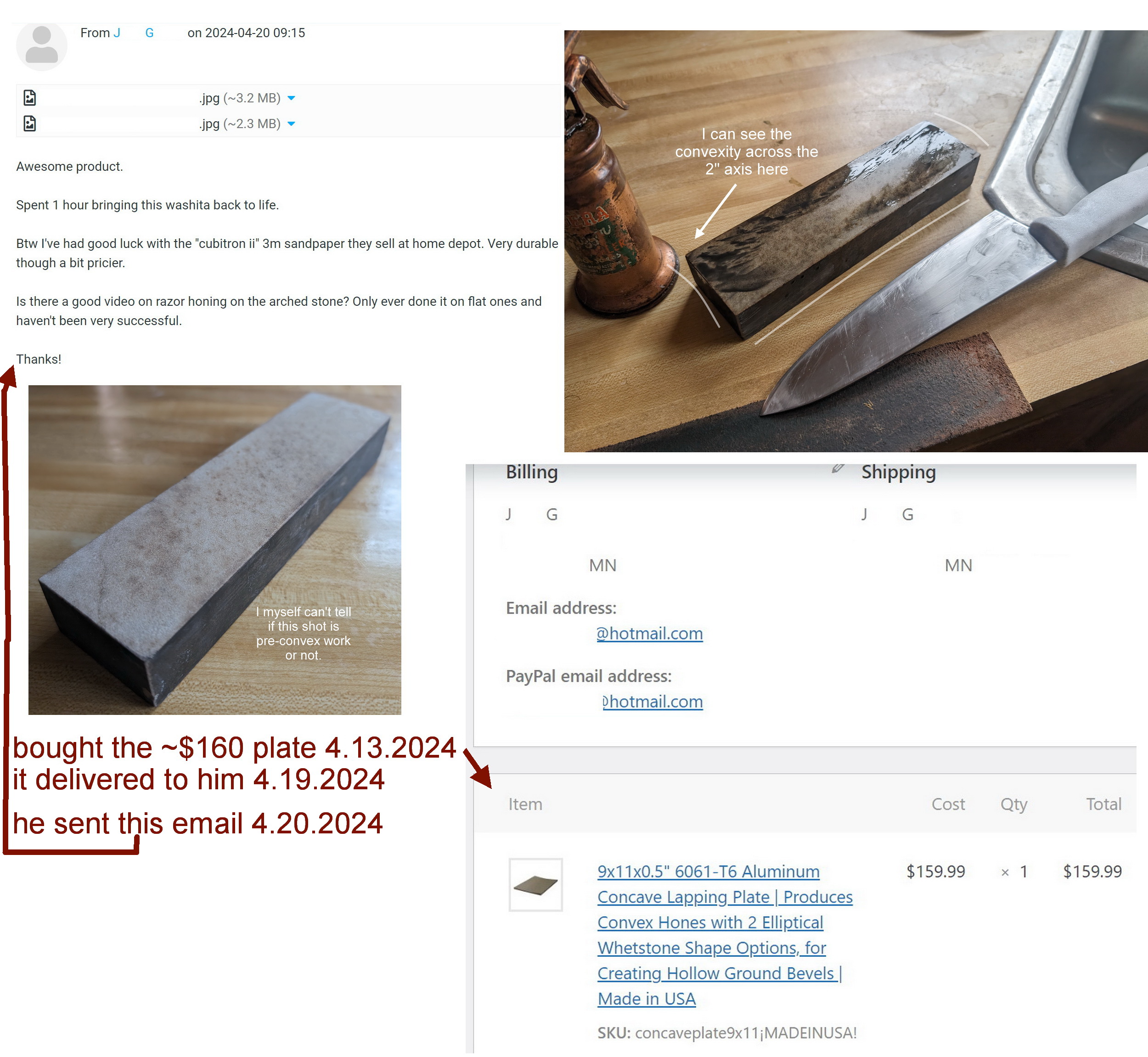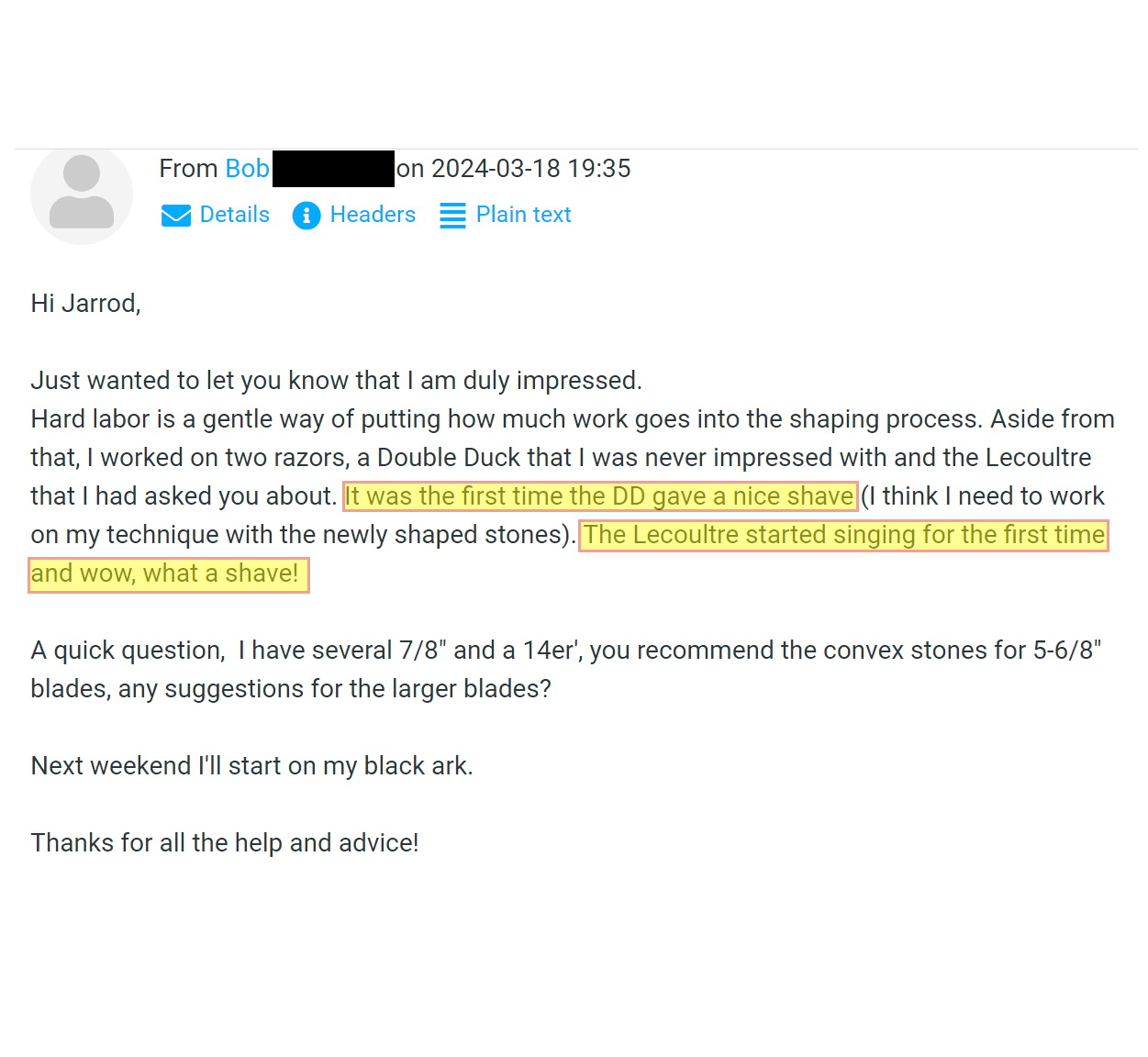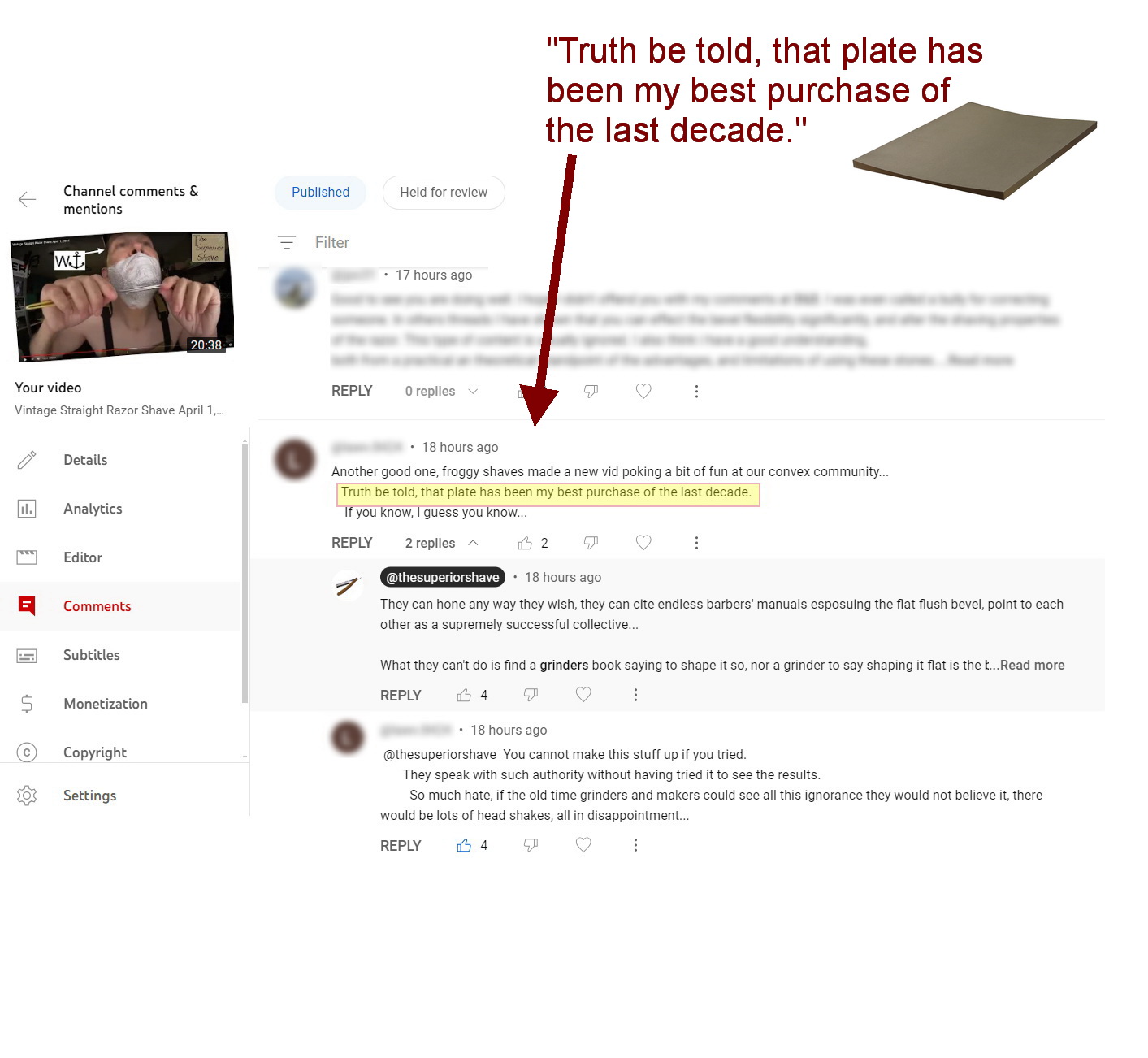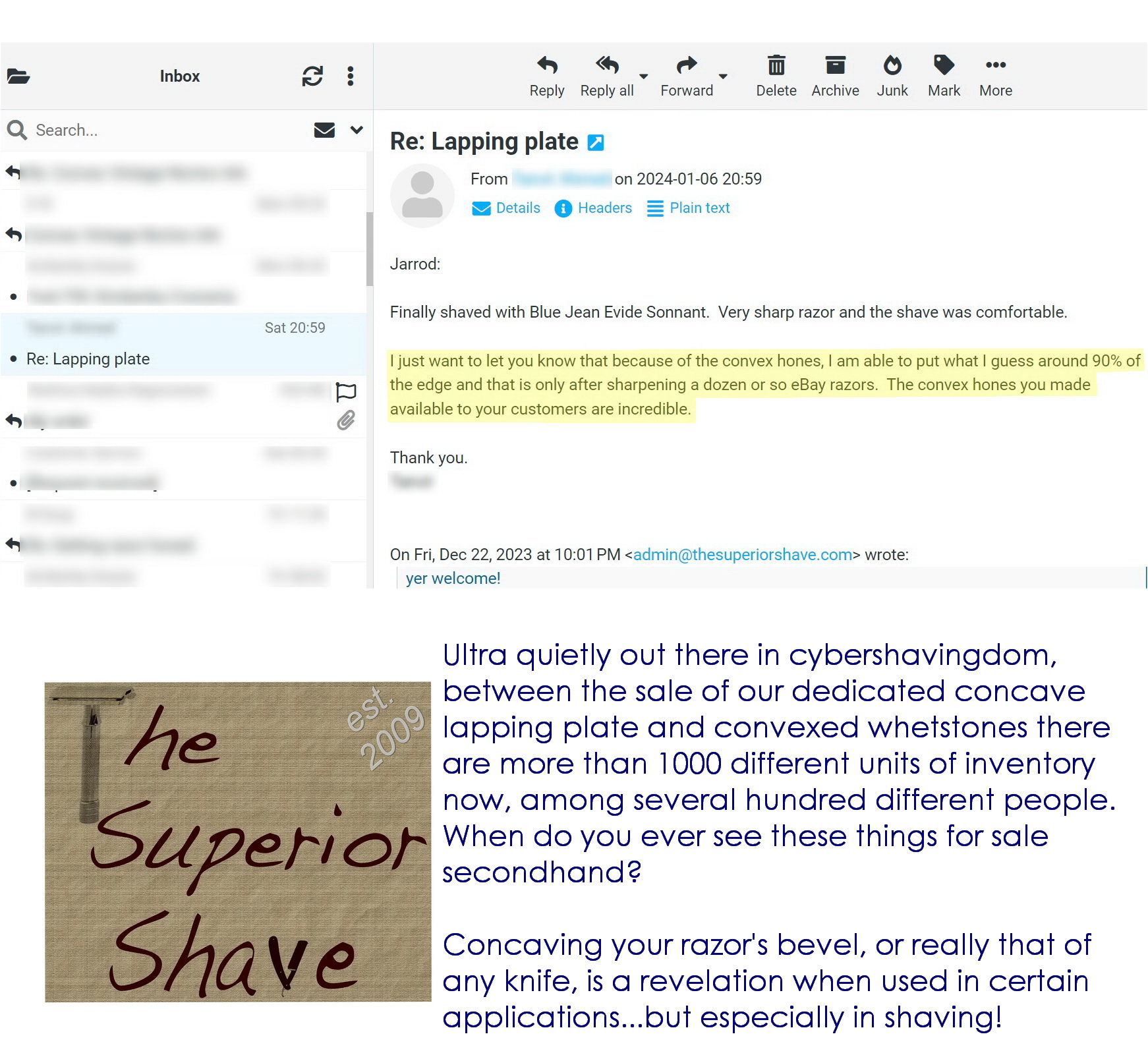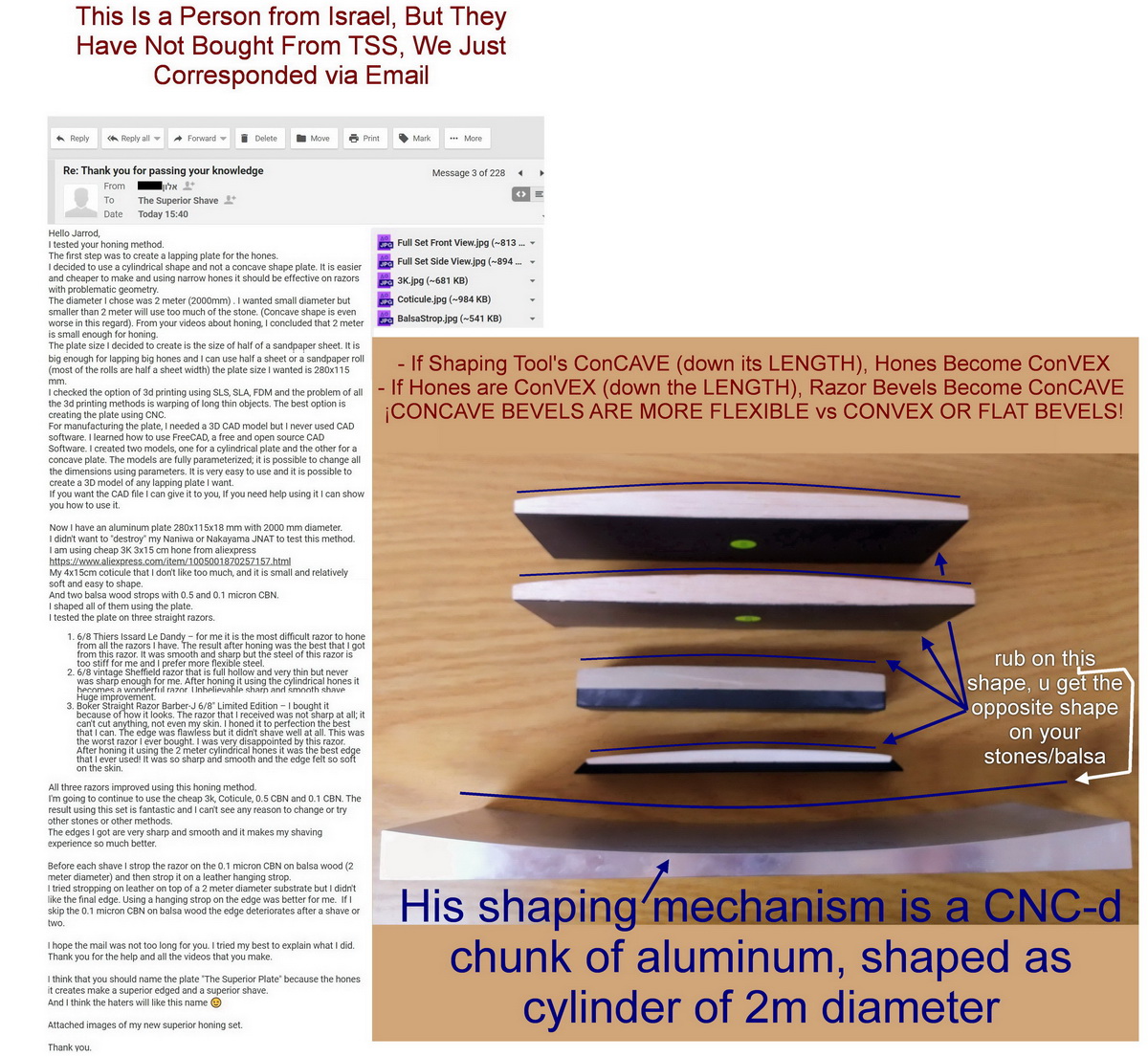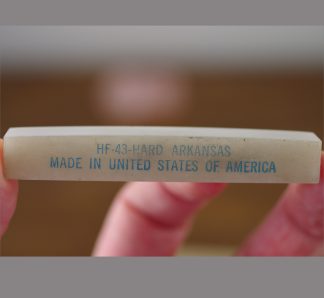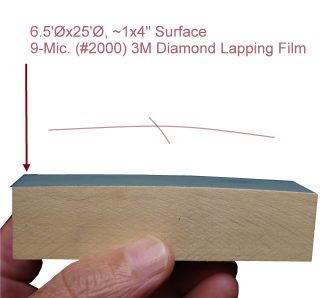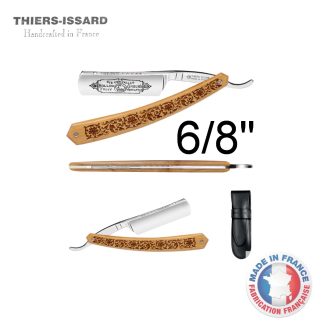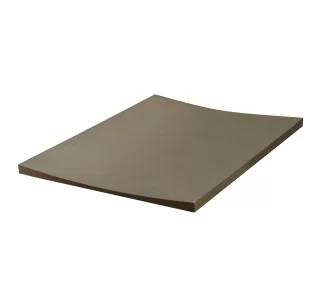Description
This 9x11x0.5″ aluminum plate holds sandpaper in place in a special shape which allows you to shape your whetstones to become ‘arc-chords’, so you can create a concave (hollow ground) bevel upon any cutting tool, like a razor.
It turns your formerly-rectangular sharpening stone surfaces in to stationary, small pieces of much bigger imaginary sharpening wheels.
Wheels create thinner edges than flat fields of abrasive – that’s the way geometry works.
The concaved edge profile you create can be partially applied (= concave toward ‘rear’ of bevel, flat or convex at apex) or fully applied (= concaved through to apex, two concave-curved arcs intersecting vs two lines intersecting).
While marketed towards straight razor users, this plate’s nonetheless a revolutionary item for many fields of sharpening; any serious chef that only uses their own knives, for example, should own this or something like it – some way to create meaningfully convexed hones, and therefore meaningfully concaved bevels. No matter how good one’s incumbent efforts with flat or convex bevels, they know not what they’re missing, but as I always say, “comparison is the robber of joy”. Buy a spacing guide and put some concavity in to your fine chef knives and you’ll be shocked!
Learn all about stone-shaping here, from a gent who has forgotten more of abrasives and geology than I shall ever know!
You need not create a concave bevel form for the entire bevel, as it is still a huge benefit to merely thin the ‘rear’ 80% of a bevel’s width and finish on a flat/hard/fine finishing stone or a pasted strop (it is perpetually challenging to finish entirely on a length-convex whetstone, though my best shave results do occur when achieving that lofty goal). In fact, the apex change is the least important change this tool makes.
In the razor realm, the overwhelming preference by professionals in the peak history to hone upon a fine foot powered natural stone wheel was because by thinning the razor’s bevel directly at the factory [or at the local sharpening expert or occasional barber bestowed with the Pike Arkansas wheel], you would:
- increase the sum area of steel thinner than human hair (= the portion that ENTERS hair, thicker metal just “squeegees”/cleaves it away)
- increase the flexibility of the apex (so it penetrates hair more easily when presented at ideal angle)
- ease the home user’s re-sharpening with flat hone(s) or pasted strop by ensuring their efforts *must* affect directly upon the apex (for there could not be metal present just behind which could obstruct a flat stone, whereas with a flat or slightly convex bevel that apex obstruction’s a perpetual problem).
It is important to understand that as a pair of fixed-shape tools which this plate (and sandpaper) produce from within rectangular whetstones, they’re not as advanced as an old (and long unobtanium) Pike Hard Arkansas wheel. For any given razor size, there will be a perfect diameter wheel which, if held upon the razor with spine and edge flush, will first touch the razor toward the rear of its bevel (at its ‘bevel shoulder’), away from its apex but also away from its hollow grind zone. Too short of a diameter = the sharpening will score the hollow grind zone. Too long of a diameter = little to no benefit created from the hollow griund in the bevel, as it will only deflect the apex and the first 0.1mm worth of steel thickness, slightly.
Ideally for straight razors, you’d want to thin the bevel’s “shoulder” by ten microns or more, and finish with an abrasive field that initiates interaction jusssst behind the apex, between the actual apex and the point that it is 0.1mm thick “above” the whetstone.
When you shape your whetstones so that their length faces the 9″ axis of this shaping tool, you achieve a ~6.5’Ø (~2mØ) form primary diameter ellipse, with a ~25’Ø secondary diameter going across your stone. Upon most 4/8″ razors I’ve had in-hand since using this method, which tend to have a larger inclusive angle at their tip, the 6.5’Ø minimum shape provided by this tool is still a little longer than ideal, and thus your honing will still hit forward of your bevel’s “shoulder” in the first step, limiting the ability for it to thin the razor bevel at the shoulder. You’d need a smaller diameter imaginary wheel to perfect such razors, and this costly single tool cannot provide you that. Wheels (and wheel shapes) fine enough for this sort of work are quite scarce!
On a 7/8″ razor, on the other hand, those tend to have inclusive angles toward the bottom end of the accepted ~15-18° range. Here, the 6.5’Ø shape is not so short that it comes to initial contact within the razor’s hollow grind, but close enough to that that sharpening slurry will affect the appearance of the hollow grind (which is always a ‘risk’/tradeoff, and more prevalent the larger the razor width becomes, or the lower its cutting angle becomes). They could use a *larger* imaginary first wheel shape than 6.5’Ø.
The absolute ideal goal in honing on wheels should be to thin the bevel in stages, and finish with a stone which will touch jusssst behind the apex.
Shaping the stone so that its length faces the 11″ plate axis results in a ~25’Ø x ‘6.5Ø elliptical form. This shape will do a good job of gently flexing the razor’s apex as it sharpens on *any* razor.
If you’ve read this far, below are videos worthy your time

